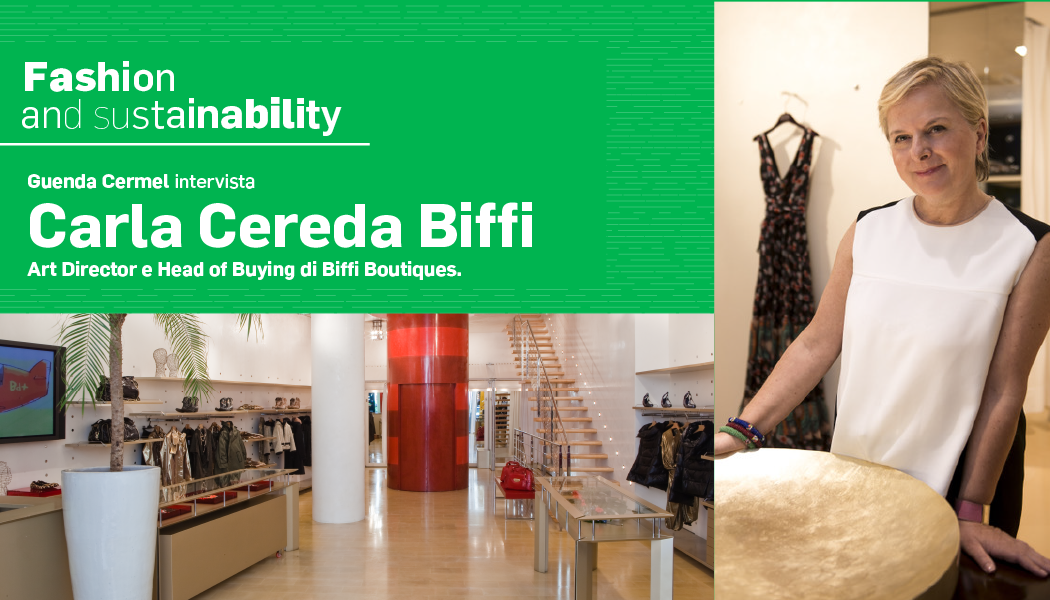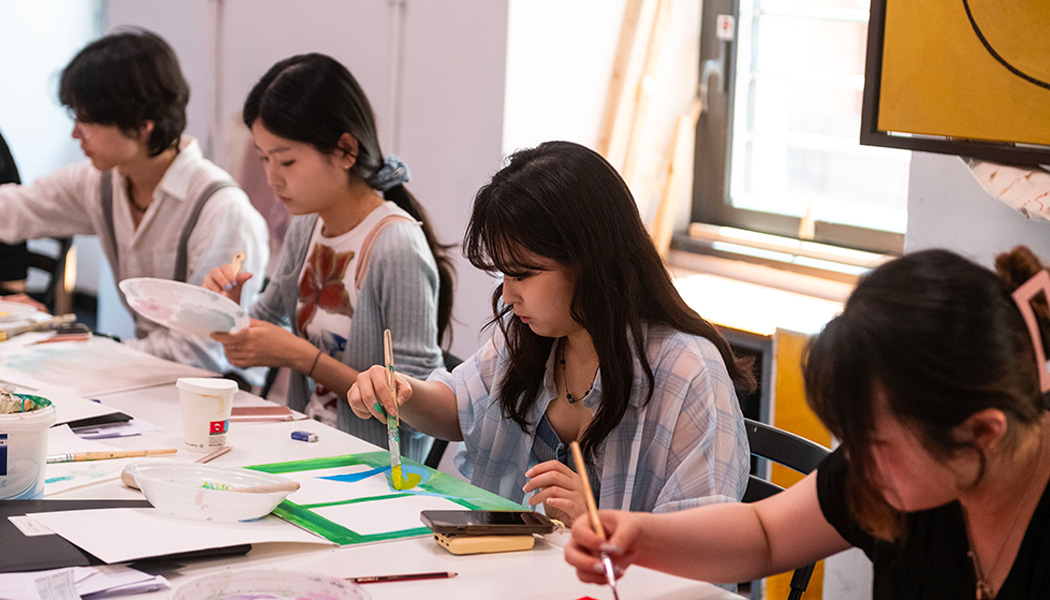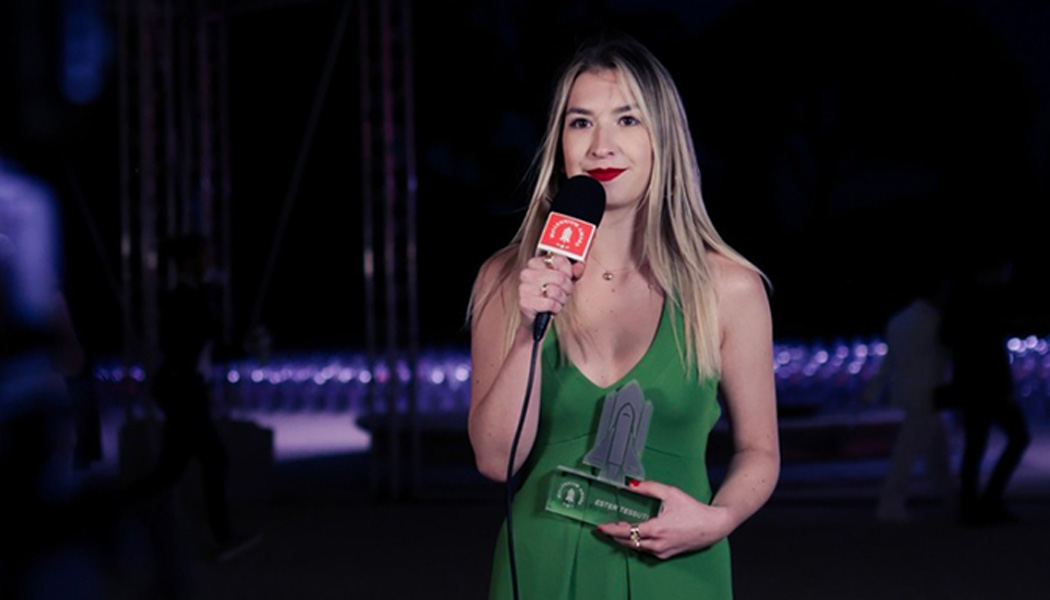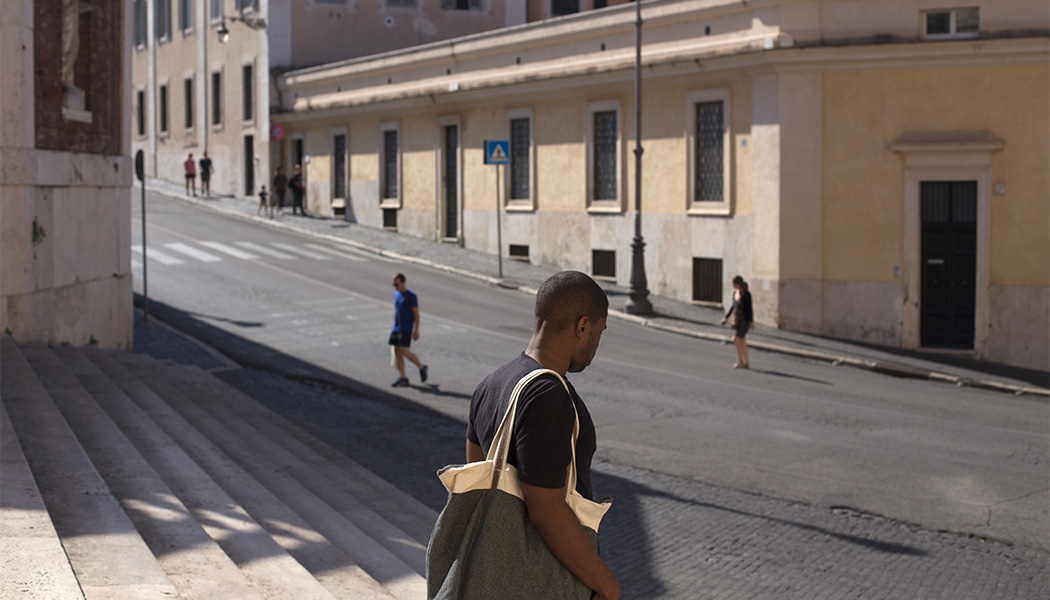The “Fashion & Sustainability” column hosted by Guenda Cermel resumes its course with an exclusive interview with Carla Cereda Biffi, Art Director and Head of Buying at Biffi Boutiques.
Since its founding in the 1960s, Biffi has always stood out for its pursuit of innovative fashion brands.
Today, in your opinion, what does it mean to innovate in fashion?
Fashion has always had the ability to tell the story of society, the times and the context in which it is embedded; therefore, today more than ever, innovating means knowing how to combine production and creative storytelling (i.e., that which passes through a visual, tactile, sensory language even before verbal) with the awareness that a collection, a garment, does not exist just for itself but as part of a larger ecosystem (ranging from the supply chain to the end consumer). And it is only within this context that the garment takes on and generates value. An important part of our work involves selecting niche brands and emerging designers, and we have found in recent years that it is precisely these that are already born with a sensibility that is both aesthetic and ethical, where creativity and innovation are stimulated not only by a creative need, but also by an awareness of being part of an interdependent system.
Is there a push toward environmentally conscious buying of environmental impacts in the concept store landscape?
If so, in what terms and with what limitations?
In recent years there has definitely been a push/acceleration toward greater awareness. In our experience as an independent boutique, we start out as a container, so we work with both big maisons and emerging/niche brands. Not every brand we buy has a specifically sustainable philosophy; however, many are working to implement strategies along these lines and accelerate them. The push for conscious buying often comes from brands themselves: large companies are implementing programs to lessen their environmental and social impact (from both an ethical and business perspective), but it is mostly from niche brands and emerging designers that the biggest push comes. In fact, many of the research collections that we purchase are already born with a sustainable philosophy in mind, with an awareness of the importance of this issue, which is an intrinsic value of their concept.
We are always very happy to collaborate with brands and projects with an ethical background, where aesthetics match our vision and selection.
What are your thoughts on brand/boutique partnerships with second-hand marketplaces like Vestiaire Collective?
Is this a strategy you are considering?
This is a particularly interesting strategy, we are currently considering possible partnerships in this direction.
What do you think is the profile of the customer most attracted to conscious fashion? Do they seem more impressed by the sustainability of materials or by social and cultural impact content?
We detect a growing awareness. As far as physical boutiques are concerned, it has to be said that the customer at the moment is impressed first and foremost by the design and quality of the product (which already in itself involves much of the visual storytelling, which the product tells by itself and by the way it is presented in our corners). They are then impressed by the additional information that can be told about that garment and that collection. There is an increasing focus on cruelty-free products (with particular reference to the use of alternatives to fur), but also a growing interest in the social and cultural impact generated by garments (made in, fair labor, etc.). Generally, these are curious, informed people with a medium-to-high spending capacity. However, the importance of the garment’s planning and design should be emphasized, which is generally what most strikes the interest of customers. With regard to e-commerce, where the clientele is more international and has a younger average age, we find a greater focus on more innovative instances both in terms of design and more sustainable choices; hence also our interest in trying to add the value of storytelling to the sale with forthcoming implementations also within the product sheets.
What sustainable brands do you currently have in your portfolio?
We have several; to make a complete list one would have to differentiate with regard to the type of sustainability intended. Just to name a few of the younger ones: Bethany Williams, Tiziano Guardini, Bode New York, Chopova Lowena, Collina Strada, Colville, Handle With Freeedom, Helmstedt, Loverboy, Sunnei, Toogood, Federico Curradi, Veja.






